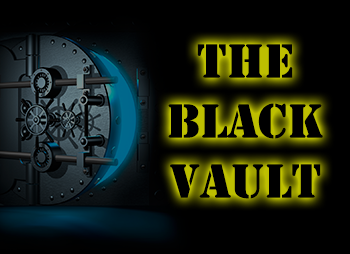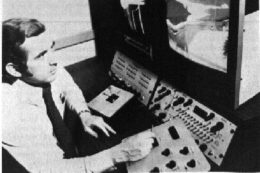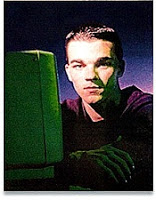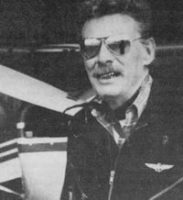by Charles Lear
 At this point in time, most people interested in UFOs are probably used to being able to look at official government documents if they want to do some research. The C.I.A., F.B.I. and N.S.A. all have UFO related documents available online and there is, of course, the enormous collection amassed by John Greenewald Jr. on his site, The Black Vault. One might think that the three letter agencies listed above would have been reluctant to make such documents readily available. This was certainly the case in the early 1970’s when researchers began to use a new tool at their disposal known as the Freedom of Information Act. The F.O.I.A. was passed in 1966 and required that government agencies release documents, not exempt according to the statute’s guidelines, to any citizen upon request. Part of the idea was to provide citizens with insight into the operations of government agencies in the hope that they could play a part in making them more efficient. The act was amended in 1974 and now offered citizens a judicial review if they felt a request had not been responded to satisfactorily. Bruce Macabee, an optical physicist and UFO researcher, was one of the first to take advantage of the act but it was a private group, Ground Saucer Watch, that made headlines after successfully acquiring over 900 pages of documents from the C.I.A. GSW was dissolved shortly thereafter in the midst of financial difficulties but some of its members had already formed Citizens Against UFO Secrecy. CAUS went on to acquire documents from many agencies, and it was because of the efforts of these early adventurers who fearlessly confronted monstrous bureaucracies that we have the resources that are available today.
At this point in time, most people interested in UFOs are probably used to being able to look at official government documents if they want to do some research. The C.I.A., F.B.I. and N.S.A. all have UFO related documents available online and there is, of course, the enormous collection amassed by John Greenewald Jr. on his site, The Black Vault. One might think that the three letter agencies listed above would have been reluctant to make such documents readily available. This was certainly the case in the early 1970’s when researchers began to use a new tool at their disposal known as the Freedom of Information Act. The F.O.I.A. was passed in 1966 and required that government agencies release documents, not exempt according to the statute’s guidelines, to any citizen upon request. Part of the idea was to provide citizens with insight into the operations of government agencies in the hope that they could play a part in making them more efficient. The act was amended in 1974 and now offered citizens a judicial review if they felt a request had not been responded to satisfactorily. Bruce Macabee, an optical physicist and UFO researcher, was one of the first to take advantage of the act but it was a private group, Ground Saucer Watch, that made headlines after successfully acquiring over 900 pages of documents from the C.I.A. GSW was dissolved shortly thereafter in the midst of financial difficulties but some of its members had already formed Citizens Against UFO Secrecy. CAUS went on to acquire documents from many agencies, and it was because of the efforts of these early adventurers who fearlessly confronted monstrous bureaucracies that we have the resources that are available today.
 Ground Saucer Watch was formed in 1957 and its members included scientists, engineers and technicians. William Spaulding, the group’s director, was an aerospace quality control engineer who worked at a company called AIResearch. GSW was based in Arizona and was one of the first groups to respond to the 1975 Travis Walton incident. They achieved national notoriety thanks to a lawsuit filed against the C.I.A. in 1977. Spaulding was seeking the release of requested documents and had retained the services of New York attorney, Peter Gerston who offered his services pro bono. In order for C.I.A. to win, they had to establish that UFOs were a matter of national security (contrary to repeated statements of organizations such as the Air Force) and that they had legal authority to investigate UFOs. While they awaited the outcome, in 1978, GSW members, Todd Zechel, Brad Sparks and others, along with Gerston, formed CAUS in order to “open the war on UFO secrecy on other fronts.” Near the end of that year, the C.I.A. released almost 900 pages of documents and on January 14, 1979, an article appeared in The New York Times detailing some of the revelations.
Ground Saucer Watch was formed in 1957 and its members included scientists, engineers and technicians. William Spaulding, the group’s director, was an aerospace quality control engineer who worked at a company called AIResearch. GSW was based in Arizona and was one of the first groups to respond to the 1975 Travis Walton incident. They achieved national notoriety thanks to a lawsuit filed against the C.I.A. in 1977. Spaulding was seeking the release of requested documents and had retained the services of New York attorney, Peter Gerston who offered his services pro bono. In order for C.I.A. to win, they had to establish that UFOs were a matter of national security (contrary to repeated statements of organizations such as the Air Force) and that they had legal authority to investigate UFOs. While they awaited the outcome, in 1978, GSW members, Todd Zechel, Brad Sparks and others, along with Gerston, formed CAUS in order to “open the war on UFO secrecy on other fronts.” Near the end of that year, the C.I.A. released almost 900 pages of documents and on January 14, 1979, an article appeared in The New York Times detailing some of the revelations.
The first observation was that the C.I.A. had lied when “repeatedly” stating that they had ceased collecting UFO information in 1952. According to the Times, an August 1, 1952 memo recommending continued surveillance of “flying saucers” contained the following:
“It is strongly urged, however, that no indication of C.I.A. interest or concern reach the press or public, in view of their probably alarmist tendencies to accept such interest as ‘confirmatory’ of the soundness of ‘unpublished facts’ in the hands of the U.S. Government.”
A document dated October 2, 1952, reveals the agency’s concern that the “flying saucer problem” could be used by the Russians as psychological warfare or conceal a physical attack. It recommended that the agency work with the Psychological Strategy Board to “develop . . . a policy of public information which will minimize concern and possible panic resulting from the numerous sightings of unidentified objects.”

A case found among the files that has become a classic was mentioned in the Times article as well. This was the September 19, 1976 incident in Tehran, Iran which involved Iranian pilots in two Phantom F-4 jets attempting to intercept a cigar-shaped UFO and having their instrumentation and communications fail when getting close. A smaller object later emerged from the larger one and when one of the pilots tried to fire an Aim-9 missile at it, his weapons panel failed and he lost communications. It was only when they were beyond a range of 25 nautical miles that their systems were restored. Another researcher, Charles Huffer, had heard rumors of the report and managed to get his own copy via a F.O.I.A. request to the Pentagon. The document in question was a teletype that was sent to numerous defense and intelligence agencies. When queried, spokespeople for the various agencies responded that any information coming out of an area as sensitive as the Middle East was of interest and would be disseminated in such a manner. It was this document that sparked John Greenewald Jr.’s very first F.O.I.A. request as a teenager on August 11, 1996.
While GSW was in the final stages of their suit with the C.I.A., CAUS took on other agencies. They had some skirmishes with NASA and the State Department and one of their researchers had the F.B.I. brought down upon him by the N.S.A. In 1978, Stanton T. Friedman was giving a UFO lecture when he was approached by a man who claimed to have been with a unit of the U.S. Air Force Security Service based in Key West, Florida. According to the man, Spanish speaking operators had picked up transmissions from Cuban manned MIG-21s scrambled to intercept a bogey that had entered Cuban airspace. The bogey was reportedly a large metallic sphere and when the flight leader was locked on and ready to fire missiles, his plane was disintegrated. All data concerning the case was allegedly sent to the N.S.A. along with a report. Friedman got a written statement from the man and passed it on to National Enquirer reporter, Robert Pratt who asked CAUS Research Director, Robert Todd to verify it.
Todd sent requests to the N.S.A., C.I.A., Air Force and Navy with no success. Then the C.I.A. replied with the suggestion that Todd contact the Cuban government for records. Todd alerted the N.S.A. and Air Force of his intention to contact the Cubans and asked if there was any part of the written statement that he should leave out. The reply came in the form of two F.B.I. agents who came to his home and threatened him with charges of espionage which carried penalties of life in prison or death. Todd was cooperative and the agents left without charging him. Todd informed CAUS of the visit and they made inquiries with the F.B.I. and Air Force and were given the brush off. Todd was then contacted by the N.S.A. and told that they could find no record of the Cuban incident but if it did happen, the information was unlawfully disclosed by a former U.S. intelligence analyst.

The F.O.I.A. became a regular tool for CAUS members as a means to attempt to verify reports, which included an alleged crash in Bolivia, the Rendlesham Forest incident and the infamous episode at Kirtland AFB that brought Paul Bennewitz and Richard Doty into contact. They published their findings in their newsletter, JUST CAUSE, where they also detailed their legal battles which included a controversial case against the N.S.A. In that case, U.S. District Court judge, Gerhard A. Gessell, withheld 131 documents based on an affadavit from a N.S.A. representative without reviewing the documents himself.
Peter Gerston appeared in six documentaries including, “UFO: What’s Going On?” in 1985 and “Mirage Men” in 2013 which dealt with Doty and Bennewitz. Two CAUS members, Lawrence Fawcett and Barry J. Greenwood published the book, “Clear Intent” in 1985 with case details and documents they’d acquired. It’s not clear when the group became defunct but Gerston mentioned the possibility of reviving the group in 1998 which didn’t happen. As the public became more distrustful of the government, GSW and CAUS had shown that there were reasons for this and that agencies were, indeed keeping secrets regarding UFOs. They had the F.O.I.A. and they knew how to use it and, with the development of the internet, there would soon be a means to widely distribute the information they’d uncovered.